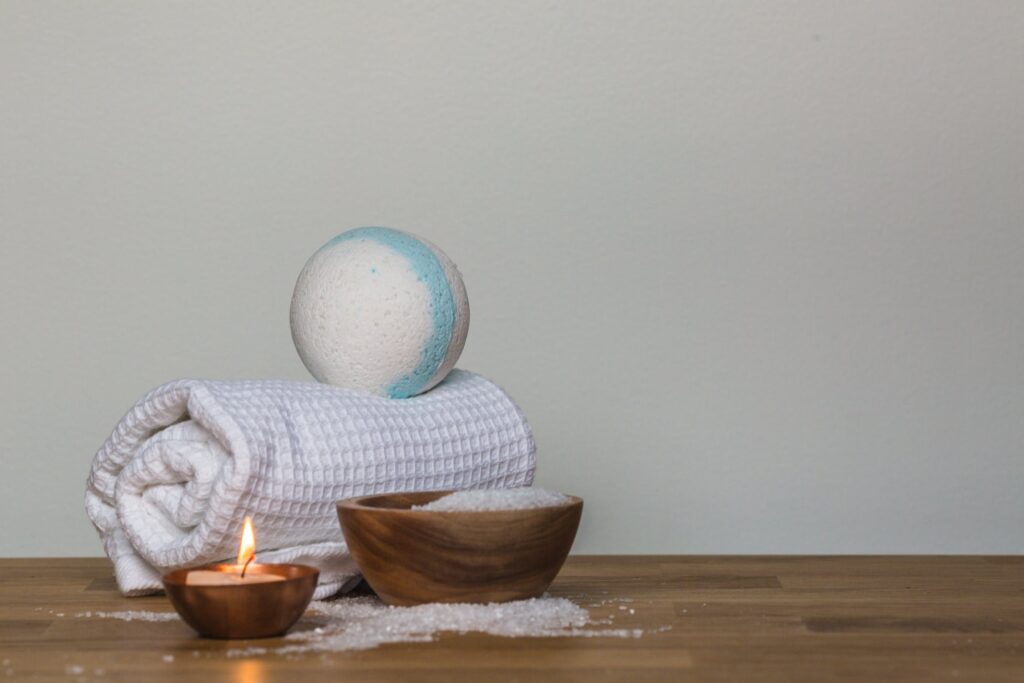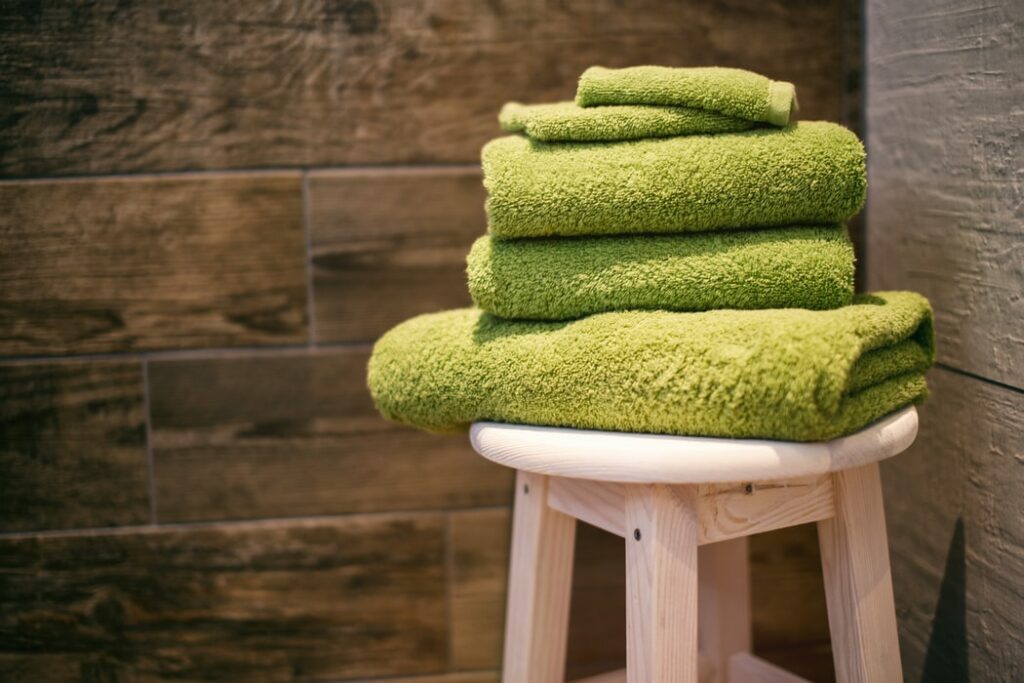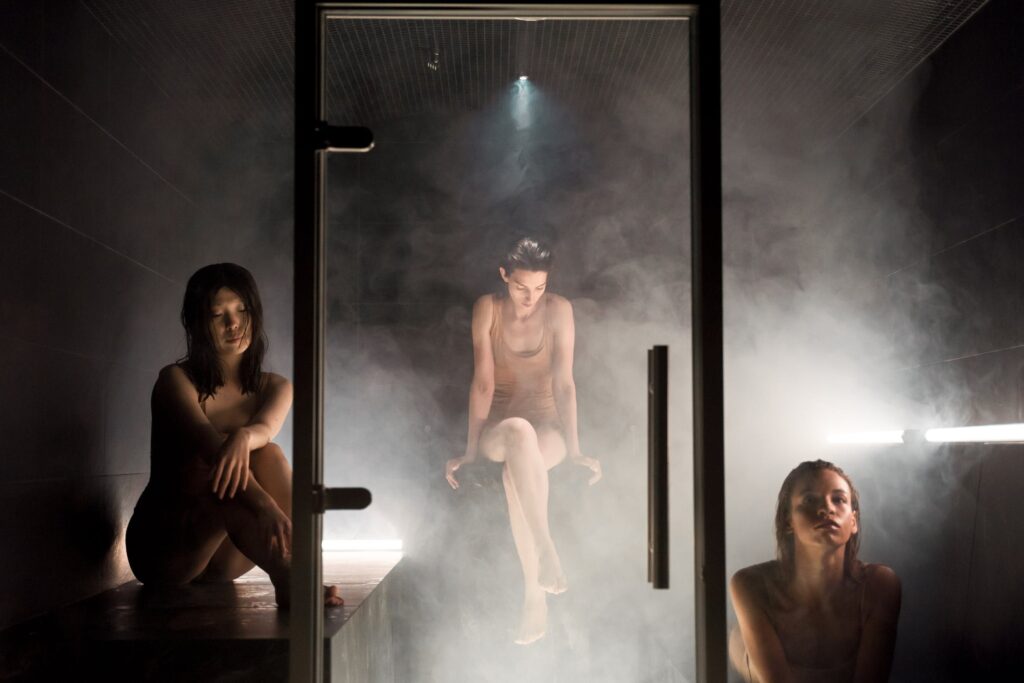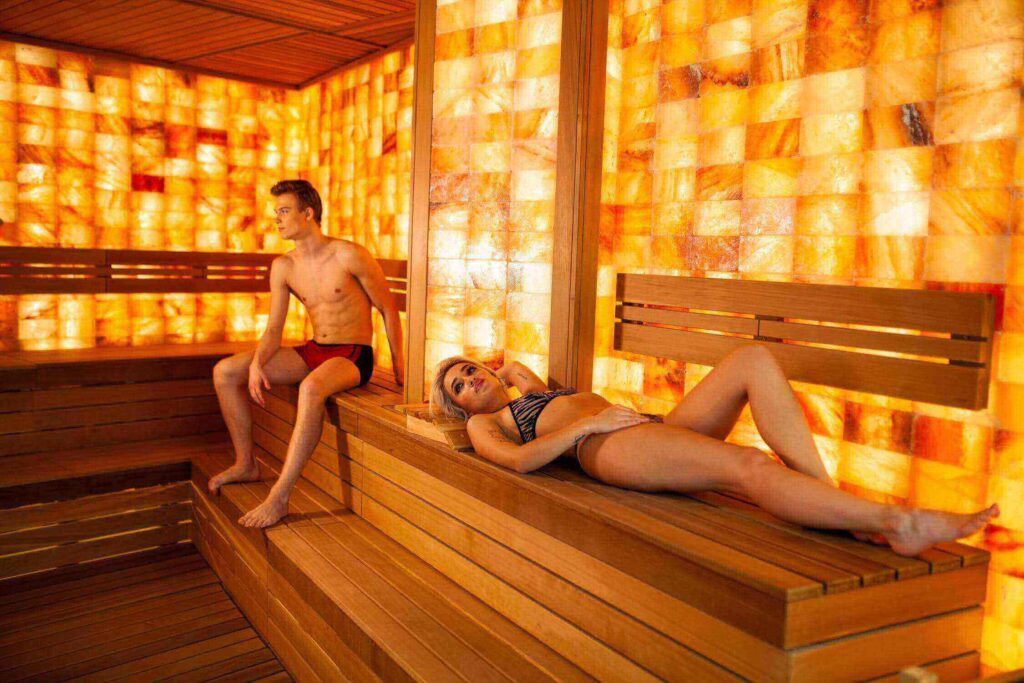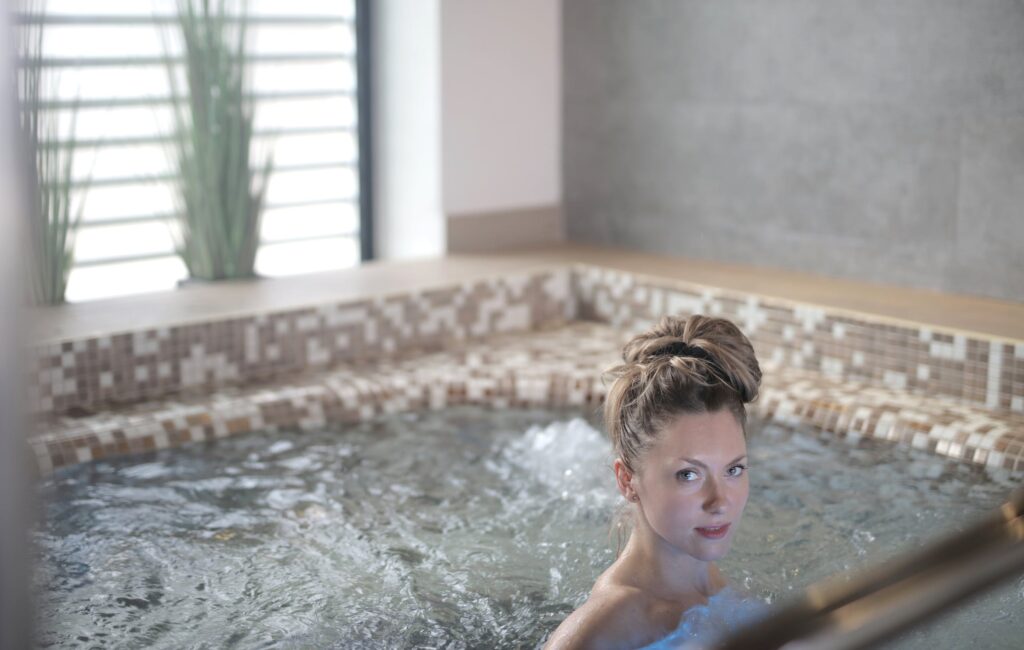Nothing compares to a session of twenty minutes spent perspiring in a sauna. After you are through, you will feel calmer and refreshed, and the heat will assist in soothing any painful muscles while also improving your general health and sense of well-being.
If, on the other hand, you find that the high temps of a standard sauna are too much for you to bear, an infrared sauna may be able to provide the same health benefits as a sauna without the discomfort caused by the great heat.
We have compiled a list of the questions that we are asked the most here for your convenience, whether you are getting ready for your very first session or are a frequent visitor. We hope that these will help you feel more comfortable, serene, and at ease before, during, and after your visit by providing information on everything from what to plan from your first visit to all of the ways that infrared treatment helps heal chronic conditions.
Infrared saunas are relatively new and trendy when compared to traditional saunas, which date back almost 2,000 years. Devotees of infrared saunas claim that the invisible light can deeply enter tissues and increase the level of detox, which in turn increases the benefits of the sauna in terms of relieving aches and pains and boosting happiness.
In a regular sauna, the hot air causes your body to become heated, which in turn causes you to sweat. On the other hand, an infrared sauna allows your body to absorb the heat from the infrared rays.
In the near future, we will investigate the scientific aspects of saunas. In the meanwhile, if you are a novice and have been considering giving one a try, there is no question that you will want to maximize the use of the time you spend within the facility. (After all, it's not always simple to find the time to sit down and work up a sweat!)
Review these helpful hints from the experts before you schedule your first session so that you can get the most out of it.
FAQs About Sauna
All that sweating will dehydrate you, so make a point to drink plenty of water after your sauna session. You'll also want to replenish your electrolytes. Finally, people with heart conditions should check with their doctor before trying a sauna.
Perhaps one of the biggest boons to using a sauna after your workout is the effects it can have on muscle recovery. The aforementioned study, for example, found that 30-minute sessions in an infrared sauna decreased post-workout muscle soreness and boosted recovery.
Adding a sauna session after a heavy work out is a fantastic way to increase your body's ability to build muscles faster and more efficiently. Two major factors are at play here - human growth hormone and heat shock proteins.
For the everyday athlete, 5-15 minutes in the sauna two to three times a week, is a good starting place, increasing to 10-20 minutes three to five times a week. On the other end of the spectrum, ice baths are also popular among athletes, but only under certain conditions.
The benefits of a hot tub are similar to a sauna. They both achieve stress relief, improved sleep, muscle relaxation, and cardiovascular improvement. However, the difference is a hot tub has more offerings such as massaging jets, hydrotherapy options, relaxing sounds of water, and sore muscle relief.
What Exactly Is an Infrared Sauna?
Because they don't use air heat, infrared saunas are distinct from more traditional saunas. Instead, the body is heated directly with the use of infrared lights, which work by emitting electromagnetic radiation to create heat.
These saunas employ infrared panels rather than traditional heat, so they warm your body before they heat the air, says physical therapist Vivian Eisenstadt, MAPT, CPT, and MASP. "In these saunas, your body is heated before the air,"
An infrared sauna can run at temperatures as low as 120 degrees Fahrenheit, while a traditional sauna typically operates at temperatures between 150 and 180 degrees Fahrenheit.
According to proponents of infrared saunas, only about 20% of the device's output heats the air, while the remaining 80% is used to warm the user's body.
Proponents of infrared saunas argue that the heat can reach deeper into the body than warmed air. As a result, you'll be able to see increased perspiration even when the weather outside is cool.
According to Eisenstadt, this makes the sauna experience more pleasurable, so you may stay in there longer and raise your core body temperature by two to three degrees.
Something to Anticipate
After you check in at the front desk, you'll be led to one of our three private rooms, each of which has its own full-size infrared sauna. Before or after your sauna session, unwind with a cup of complimentary herbal tea in the Relaxation Room. We suggest that you arrive just a few minutes early for your appointment, dress in loose, comfortable clothing, and try to relax before your session begins.
Inside the infrared sauna, you'll discover plush towels and a waffle robe, as well as filtered alkaline water and a pamphlet that explains chromotherapy and gives you more details on infrared. For sessions that are 25 minutes long, we suggest spending 15-20 minutes in the sauna, and for sessions that are 55 minutes long, we suggest spending 40-45 minutes in the sauna. This will give you some breathing room after the event to change, grab a drink of water, and collect your thoughts.
The detox mode is already engaged in the infrared saunas. But, with the help of the Android tablet given in each sauna, guests may tailor their experience to their specific needs by choosing from seven distinct wellness programs and utilizing a wide range of apps, such as Spotify, Pandora, Headspace, and other relaxation and rejuvenation tools. You may also immediately connect your phone to the sauna's speaker system and listen to your favorite tunes or podcast.
You'll break a sweat, learn to relax your body and mind, and leave class feeling refreshed and reenergized.
How to Maximize Your Infrared Sauna Experience
Putting down the bottle
Consuming alcohol prior to a visit is always inappropriate. Having a few too many drinks the night before hitting the sauna can leave you feeling even drier than usual.
Try some H2O instead.
The most common mistake sauna users make is not drinking enough water before, during, and after their session. Staying hydrated is crucial because you will be losing a lot of fluids through sweat. Before entering the sauna, it is important to hydrate by consuming one liter of water. I advised them to increase their water intake in the hours leading up to their sauna session, as well as during their time in the sauna itself, because the heat might cause dehydration. "Sauna time should be treated like a rigorous workout," they advised. If your mouth is dry after leaving the sauna, you probably didn't take in enough water. This is the rule of thumb, generally speaking.
Put Your Back Straight
Although reclining across the bench is perfectly fine (and can even be quite relaxing!), you will get the most out of the position by sitting up. The warmers may reach your entire front and back when placed in this configuration. If you want your body to absorb the maximum amount of infrared, you should put the source of the infrared directly in front of and behind the center of your body.
A Rainbow Awaits You.
There is a wealth of information available on the benefits of chromotherapy, or color therapy, which can be found in a concise handbook. Green, for instance, has been linked to a sense of calm, while yellow has been linked to a reduction in anxiety. You shouldn't give in to the temptation of exploring all 12 color options during the session. You should sit directly under the lights instead, and give each color anything from three to five minutes to have a noticeable effect.
Let Yourself to Be Constrained by the iPhone Ban
Smartphones and other mobile devices are not permitted in infrared saunas because the high temperatures and bright lights can damage their electronic components. While some hotels offer streaming services like Netflix or even live TV in their rooms, you should challenge yourself to fully immerse yourself in the digital detox by forgoing these extras. I enjoy sitting and meditating there when I can't lie down to do it. Some days I just want to lie down and rest.
Schedule Some Downtime Today
The session should be scheduled so that you have time to return to your usual core temperature and shower before beginning." We recommend taking a cold shower and chilling out for anything from five to fifteen minutes after your session, depending on how long it is. To aid your body's natural detoxification processes, you should take a shower, as perspiration is one of the most noticeable byproducts. It's important to shower after working up a sweat in order to remove any lingering dirt or oil from your skin's pores. Moreover, "There is often no pause before people go back into the hectic routine of their daily lives. It's possible to prolong the calming effect by gradually returning to daily routines.
After Your Workout, Change Into Something More Comfortable, Like Loose-Fitting
After that, you could still be sweating a little bit. If you don't want to fight to pull on compression leggings or tight pants while your legs are already sweaty, choose for a piece of clothing that is loose, breathable, and comfortable. Yoga pants with extra room in the legs, a cotton tee, and a supportive yet slouchy sports bra are all good options to bring along.
Set Up Your Consultations at Convenient Times.
If you have difficulties going asleep or staying asleep, a session in the sauna before bed may help. Yet, if you need a pick-me-up to get through the day, a visit to your doctor first thing in the morning can be just the ticket." For many people, a session in the infrared sauna first thing in the morning is the key to a productive day.
The Sauna Is a Great Place to Relax and Rejuvenate, and It’s Also a Good Idea to Go When Your Period Is in Full Swing.”
The infrared lights' capacity to increase circulation and blood flow, along with the heat's analgesic effects, suggests that this therapy could be useful for easing the agony of menstrual cramps.
Reasons Why Visiting an Infrared Sauna Will Give You More Than a Good Sweat
It's Beneficial For Your Skin
After I had sweated, one of the first things that I noticed was how much better my skin looked. This was perhaps one of the most noticeable things. As someone who has struggled with adult acne and recurrent redness, I can say with authority that this statement is significant. There was a discernible reduction in the size of all of the blind pimples that had been hidden beneath the surface of the skin previously, and a considerable number of the blackheads on my face looked to have vanished entirely.
"Our bodies naturally store toxic compounds and toxic metals, and our infrared saunas can help eliminate these stains in your cells to aid in healthy skin and overall wellness." In the same way that your pores open up after taking a nice, hot shower, the infrared sauna can help improve your skin's appearance by helping clear out any dirt or impurities that often clog pore spaces.
You should continue to take your skincare after you have sweat by having a facial oil or lotion with you so that you may rehydrate your face later. You can also relax knowing that prolonged exposure to infrared rays in a sauna won't cause any harm to your skin. Without causing you to be exposed to potentially dangerous ultraviolet radiation, the wavelengths heat your body from the inside out.
Gets Your Heart Rate Up
Do you remember when I stated I wasn't going to work out because I was too lazy? Although an hour spent in a sauna cannot be compared to the intensity of a regular workout class, I found it very intriguing to observe how rapidly my heart rate increased and how much perspiration began to stream off of me. After a quarter of an hour, I had the distinct impression that I was engaging in significantly more activity than simply sitting still and listening to a podcast about a murder mystery. According to the findings of a study conducted by Binghamton University, sweating causes your body to exert a significant amount of effort, giving the impression that you are engaging in physical activity and possibly assisting in the process of fat loss.
It's Great For Your Mental Health, Too
Infrared saunas have been shown to have positive effects not just on a person's physical health but also on their mental and emotional well-being. To begin, I can't stress enough how beneficial it is to turn off your phone and spend sixty minutes alone in a quiet area. A more peaceful and less chaotic state of mind was the direct outcome of engaging in some mindfulness practice, which consisted of simply sitting with myself for a period of time without any interruptions. But apart from the involuntary withdrawal from digital media, my mental state was comparable to how I feel after I've finished working out: I was in a fantastic mood, I had more power, and I felt far less stressed than I did before.
Even more so than traditional saunas, infrared saunas have improved mental clarity. Because infrared saunas increase your endorphins in a manner that is analogous to that of exercise, many individuals report that after using one, they feel "so calm" or "I'm renewed!"
It's Great For Muscle Recovery
The regular practice of hot yoga has taught me that increasing the body's temperature in any way, even little, may work wonders for aching and tense muscles. Because of the significant amount that the heat assists in easing any muscular tightness, I always plan to take a class in hot yoga after a class, such as spin or Pilates. When you use an infrared sauna, you may anticipate experiencing the same kinds of benefits. The heat penetrating your muscles, tissues, and joints will allow you to feel a general sense of relaxation throughout your body, and your muscles will become more pliable. You won't have to move too much at all, but you'll still get the sense that you're contributing to your health somehow, which is another benefit of this sort of active recuperation.
It Could Be A Natural Healer
There is still a need for additional research to be done on the scientific advantages of infrared saunas; nonetheless, there are regular sweaters who think the practice to be crucial in mending many of the health issues they have been experiencing. Makes use of infrared saunas to reduce the discomfort caused by Lyme disease.
In addition to Olivia, Olivia's sister has discovered that the infrared sauna offers therapeutic benefits. Daily use of the infrared sauna has been shown to be effective in treating eczema and psoriasis in patients who suffer from Crohn's disease. It wouldn't hurt to give it a shot as long as your physician gives you the all-clear to do so.
Can children use the infrared sauna?
In most cases, children older than 12 years old are permitted to utilize the infrared sauna for a single, brief session. Before allowing your prepubescent child to use an infrared sauna, you should discuss the matter with their primary care physician because prepubescent children lack the ability to thermoregulate (control their body temp through the production of good perspiration) to the same extent as adults.
How do you use an infrared sauna?
While the majority of individuals will go to a health club, spa, or their doctor's office for infrared sauna treatments, others may go out and buy one for their homes and build it themselves. You should be aware that infrared saunas do not come with a standard set of instructions if you select to give one a try. This is really vital information to have.
Some recommendations can be followed, but in the end, it is entirely up to you to decide how you want to utilize an infrared sauna. The following are some suggestions to help you get started.
- Drink water. Before entering an infrared sauna, check to see that you are adequately hydrated. Have a glass of water just before you start your workout. You are welcome to bring water inside the sauna with you, especially if you are uncomfortable with temperatures that are particularly high.
- You get to pick the temperature. An infrared sauna has an average temperature range from 100 degrees Fahrenheit to 150 degrees Fahrenheit, with novices starting at the lower end of the temperature range and more experienced users starting at the higher end. Begin with a temperature of 100 degrees Fahrenheit if this is your first time. It's possible that you should maintain this temperature for the next few sessions. You are free to raise the temperature with each successive session up to a maximum of 150 degrees Fahrenheit.
- The period of time. Start with ten to fifteen minutes if it's your first use. You are free to add a little bit more time to each session until you reach the recommended range of twenty to thirty minutes. It is important to remember to set the timer that comes on saunas. You do not want to risk becoming dehydrated by staying in there for an extended period of time.
- Clothing. Your choice of attire is entirely up to you. While others choose to swim without wearing anything but a swimsuit, others still wear bathing suits.
- Activities that can be done while you are inside the sauna. Unwind by doing something you enjoy, like reading, meditating, listening to music, or hanging out with friends. Simply refrain from going to bed.
- It is recommended that you take your time and allow your body to calm down when the session is finished. When the session is over, your session will be finished. When you have reached the desired temperature, you can have a bath or shower. Make sure that you are getting lots of water into your system.
- A certain amount of sessions each week. Most establishments that provide treatments utilizing infrared saunas advise using the sauna at least three to four times per week. You can utilize the sauna daily if you are well enough to withstand being there for four days straight.
A specific kind of sauna, known as an infrared sauna, generates heat through the use of infrared light. One may also hear this sort of sauna referred to as a far-infrared sauna. The term "far" refers to the portion of the light spectrum where infrared rays are located. The classic sauna works by first heating the air, which then warms your body. Infrared saunas are unique in that they heat your body from the inside out rather than the air around you.
In general, the allure of saunas lies in the fact that they induce physiological responses that are analogous to those that are brought on by moderate exercise. These responses include profuse perspiring and an elevated heart rate. Because an infrared sauna achieves these effects at temperatures that are lower than those of a traditional sauna, it is possible for individuals to benefit from one of these saunas even if they cannot handle the extreme heat of a traditional sauna. However, does this translate into measurable improvements in health? Perhaps.
There is some evidence that the use of infrared saunas can be beneficial in the treatment of chronic health conditions such as high blood pressure, dementia, congestive heart failure, Alzheimer's disease, headache, and rheumatoid arthritis, type 2 diabetes, according to the findings of some studies that have been conducted on the topic. However, in order to validate these findings, further research that is both comprehensive and meticulous is required. A few of these trials were also carried out with patients while they were utilizing the conventional sauna.
On the other side, there have been no reports of any negative consequences associated with infrared saunas. In conclusion, if you are thinking about trying a sauna for relaxing purposes, an infrared sauna could be possible.
One of the most soothing and rejuvenating ways to work up a sweat is by using an infrared sauna. Infrared treatments, on the other hand, are comfortable from the beginning to the end and are less likely to cause you to feel dizzy or short of breath than typical steam or stone saunas or even sauna blankets. In addition to this, using them will give you the flushed, just-out-of-the-steam-room glow that all of us attempt to achieve.
Conclusion
Infrared saunas are relatively new and trendy, providing the same health benefits as traditional saunas without the discomfort. Infrared saunas use infrared panels to warm the body before the air, making the experience more pleasurable and raising the core body temperature by two to three degrees. The most important details are to stay hydrated, put your back straight, put the source of the infrared directly in front of and behind the center of your body, and limit the use of smartphones and other mobile devices in infrared saunas. The infrared sauna is a great place to relax and rejuvenate, and can help ease the agony of menstrual cramps, and is beneficial for your skin. Sweating in a sauna can help improve skin and overall wellness by reducing the size of blind pimples, blackheads, and toxic compounds.
It also increases heart rate and helps with fat loss, and can be beneficial for mental health. Infrared saunas have been shown to improve mental and emotional well-being, muscle recovery, and reduce the discomfort caused by Lyme disease. Infrared saunas have been shown to be effective in treating eczema and psoriasis in patients with Crohn's disease. Drink water before entering an infrared sauna, bring water with you, choose the temperature, choose clothing, and activities, and take your time to calm down when the session is over. Infrared saunas are unique in that they heat the body from the inside out rather than the air around it, inducing physiological responses similar to moderate exercise. They can be beneficial in the treatment of chronic health conditions, but further research is needed.
Content Summary
- If, on the other hand, you find that the high temps of a standard sauna are too much for you to bear, an infrared sauna may be able to provide the same health benefits as a sauna without the discomfort caused by the great heat.
- We have compiled a list of the questions that we are asked the most here for your convenience, whether you are getting ready for your very first session or are a frequent visitor.
- On the other hand, an infrared sauna allows your body to absorb the heat from the infrared rays.
- These saunas employ infrared panels rather than traditional heat, so they warm your body before they heat the air, says physical therapist Vivian Eisenstadt, MAPT, CPT, and MASP. "
- In these saunas, your body is heated before the air,"An infrared sauna can run at temperatures as low as 120 degrees Fahrenheit, while a traditional sauna typically operates at temperatures between 150 and 180 degrees Fahrenheit.
- Proponents of infrared saunas argue that the heat can reach deeper into the body than warmed air.
- Before or after your sauna session, unwind with a cup of complimentary herbal tea in the Relaxation Room.
- The detox mode is already engaged in the infrared saunas.
- The most common mistake sauna users make is not drinking enough water before, during, and after their session.
- Before entering the sauna, it is important to hydrate by consuming one liter of water.
- If you want your body to absorb the maximum amount of infrared, you should put the source of the infrared directly in front of and behind the center of your body.
- We recommend taking a cold shower and chilling out for anything from five to fifteen minutes after your session, depending on how long it is.
- Yet, if you need a pick-me-up to get through the day, a visit to your doctor first thing in the morning can be just the ticket."
- For many people, a session in the infrared sauna first thing in the morning is the key to a productive day.
- After I had sweated, one of the first things that I noticed was how much better my skin looked.
- In the same way that your pores open up after taking a nice, hot shower, the infrared sauna can help improve your skin's appearance by helping clear out any dirt or impurities that often clog pore spaces.
- You can also relax knowing that prolonged exposure to infrared rays in a sauna won't cause any harm to your skin.
- Infrared saunas have been shown to have positive effects not just on a person's physical health but also on their mental and emotional well-being.
- Even more so than traditional saunas, infrared saunas have improved mental clarity.
- Because of the significant amount that the heat assists in easing any muscular tightness, I always plan to take a class in hot yoga after a class, such as spin or Pilates.
- When you use an infrared sauna, you may anticipate experiencing the same kinds of benefits.
- Makes use of infrared saunas to reduce the discomfort caused by Lyme disease.
- In addition to Olivia, Olivia's sister has discovered that the infrared sauna offers therapeutic benefits.
- Daily use of the infrared sauna has been shown to be effective in treating eczema and psoriasis in patients who suffer from Crohn's disease.
- It wouldn't hurt to give it a shot as long as your physician gives you the all-clear to do so.
- Before allowing your prepubescent child to use an infrared sauna, you should discuss the matter with their primary care physician because prepubescent children lack the ability to thermoregulate (control their body temp through the production of good perspiration) to the same extent as adults.
- How do you use an infrared sauna?While the majority of individuals will go to a health club, spa, or their doctor's office for infrared sauna treatments, others may go out and buy one for their homes and build it themselves.
- Some recommendations can be followed, but in the end, it is entirely up to you to decide how you want to utilize an infrared sauna.
- The following are some suggestions to help you get started.
- Drink water.
- Before entering an infrared sauna, check to see that you are adequately hydrated.
- Have a glass of water just before you start your workout.
- Begin with a temperature of 100 degrees Fahrenheit if this is your first time.
- The period of time.
- Make sure that you are getting lots of water into your system.
- A specific kind of sauna, known as an infrared sauna, generates heat through the use of infrared light.
- There is some evidence that the use of infrared saunas can be beneficial in the treatment of chronic health conditions such as high blood pressure, dementia, congestive heart failure, Alzheimer's disease, headache, and rheumatoid arthritis, type 2 diabetes, according to the findings of some studies that have been conducted on the topic.
- In conclusion, if you are thinking about trying a sauna for relaxing purposes, an infrared sauna could be possible.

